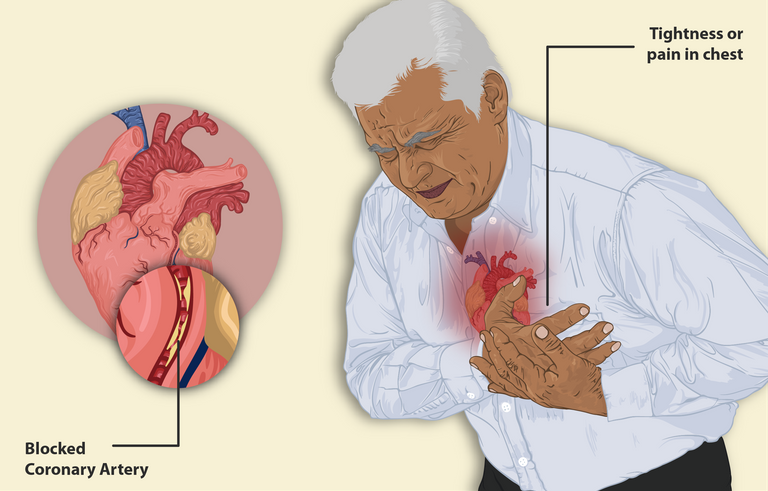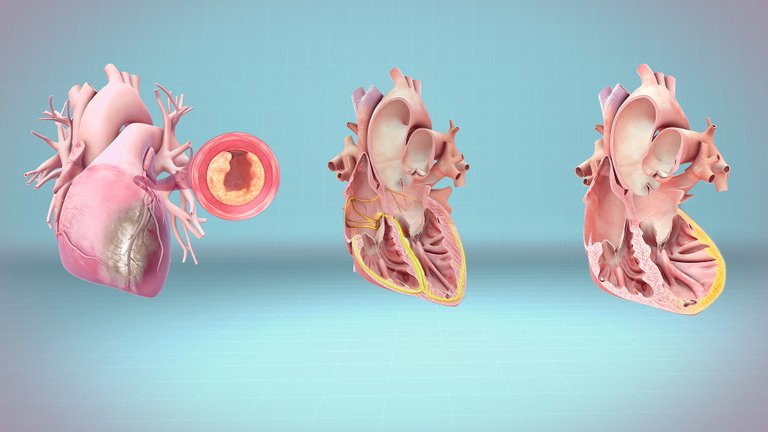Basic Description of Cardiac Arrest
A lot of people get cardiac arrest and then pass on from there, this is because cardiac arrest happens when the heart stops beating or when it beats too fast it stops pumping blood.
When there is a case of cardiac arrest, the patient typically just becomes unresponsive and collapses. A cardiac arrest will most likely not give any previous sign, and that's why it's mostly called, sudden cardiac arrest especially when the person does not survive it.

Wikimedia
Sudden cardiac arrest is not a respecter of age, as it can attack anyone at any time. It is even a leading cause of death among teenage athletes.
In an episode of cardiac arrest, the heart is no longer able to pump blood, and within minutes, the entire organ and body are placed at risk of death since they are supposed to consistently receive oxygen.
Cardiac arrest could be caused by one or more of these reasons;
- Heart problem.
- Electrocution.
- A sudden hit on the chest.
- Choking or another breathing issue like an asthmatic attack.
- Medications and some allergic reactions.
- Changes to heart structure due to an infection or disease.
- Respiratory issues.
- Infectious diseases.
Different types of heart diseases could result in a sudden cardiac arrest, but coronary heart disease remains the most common cause of unexplained cardiac death situations.

Wikimedia
Coronary heart disease happens as a result of plaque buildup in the coronary arteries. These arteries supply blood to the heart, reducing or blocking the flow of oxygen-rich blood to the heart, therefore leading to heart attack.
Sudden cardiac arrest is a case of emergency and the patient needs to be stabilized first before a diagnosis is made about the cause of the health issue.
We need to know that the sudden cardiac arrest we are talking about is different from a heart attack. A case of a heart attack happens when blood flow to a part of the heart gets blocked.
But, when heart attack could then cause changes in the electrical activities of the heart resulting in a cardiac arrest. Before the event of loss of consciousness, other signs of cardiac arrest may show up like; shortness of breath, chest pain, nausea and vomiting.
Sudden cardiac arrest could turn out dangerous if it lasts for as long as eight minutes without the administration of CPR. Brain damage can even happen just after five minutes of the attack.
The survival rate of people with cardiac arrest is dependent on the early hours of treatment. The treatment has to begin instantly as the chances of survival drops more as time goes on.
The possible complications of cardiac arrest can create chest injuries like a broken breastbone or broken ribs. If you have a family history of cardiac arrest, then you may have to check with your medical expert to guide you through how to manage your health.
The tests for sudden cardiac arrest include; blood tests, echocardiogram, chest x-ray, and nuclear scan.
References
https://www.cincinnatichildrens.org/health/s/sudden-cardiac-arrest
Thanks for your contribution to the STEMsocial community. Feel free to join us on discord to get to know the rest of us!
Please consider delegating to the @stemsocial account (85% of the curation rewards are returned).
Thanks for including @stemsocial as a beneficiary, which gives you stronger support.